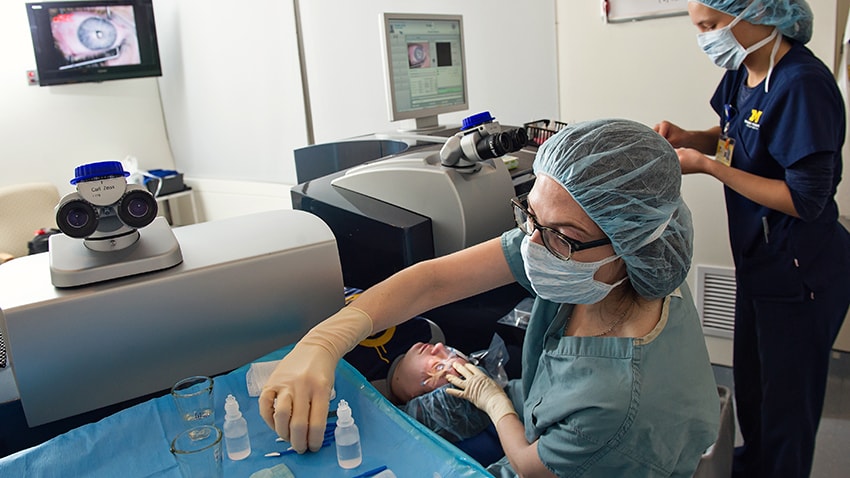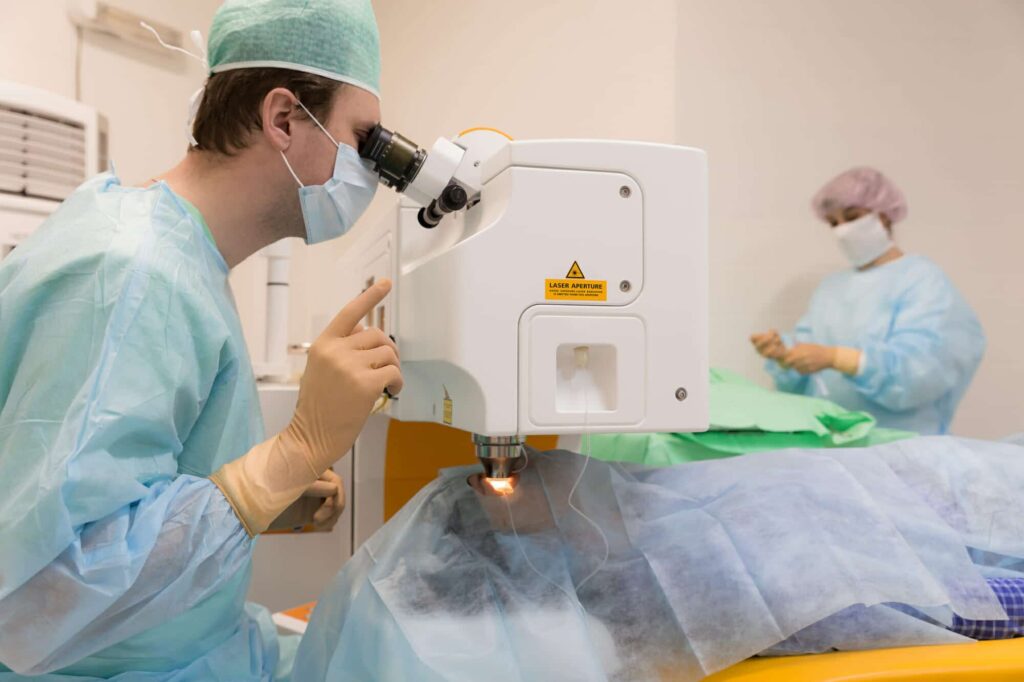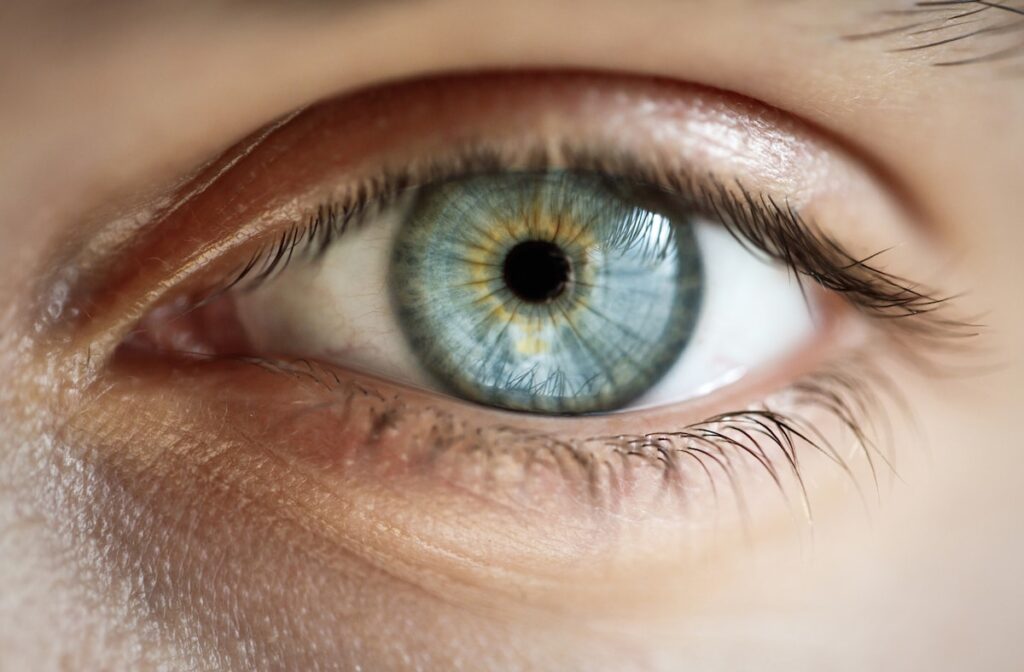LASIK has been growing popularly as a means of addressing refractive error. Many patients who undergo LASIK surgery can see just fine without contact lenses or glasses. Many eye care patients usually ask about the LASIK procedure and what they can expect.
We want to focus on the LASIK surgery’s side effects and what patients will experience during their recovery process. By realizing what to anticipate during and after surgery, patients can better understand the procedure of lasik eye surgery and maintain truthful expectations.
Things to know about the LASIK procedure
LASIK is a refractive surgery that uses safe laser technology to reshape the corneas. That improves the way light passes through the eyes and focuses on the retinas, thus remedying near-sightedness, farsightedness, and astigmatism.

Should you expect side effects after LASIK?
Yes. LASIK is a surgical procedure. And, since all surgeries involve side effects as part of the healing process, you shouldn’t expect less. That is a natural part of your body recovering and rebuilding. Thankfully, many of the side effects are mild, and you will receive ample instructions about how they can be dealt with.
Common Side Effects Following LASIK Surgery
Because each eye is unique, the severity of side effects will vary from one patient to another. During follow-up appointments, you need to alert your doctor of any side effects you’re experiencing so that he can promptly address the issues. The common complications may include blurriness. Typically, those symptoms subside a few days after the surgery. Other side effects may include the following:
Sensitivity to Light
Sensitivity to light is expected in the first few days or weeks after LASIK surgery. You should wear sunglasses while outside to avoid rays of light and avoid excessive television or computer use. In addition, you must learn the habit of keeping your eyes closed as frequently as possible after surgery. That is an excellent way to promote quick recovery. Many patients find it helpful to rest after LASIK. Starting your recovery in a quiet room can make you comfortable.
Halos and Glares
After the LASIK procedure, some patients experience glares, halos, and starbursts in their vision. These LASIK side effects are most common during the healing process when the corneal flap is not adjusted correctly. They tend to be more rampant at night, primarily if the pupils dilate beyond the area treated with LASIK surgery. That is a temporary side effect that goes away as the eye continues healing for most patients.
Dry Eye
Changes in the cornea during LASIK surgery can affect tear production in your eyes, leading to increased dry eye symptoms. Some of the dry eye complications are itchiness, redness, and blurred vision.
If you exhibit dry eye symptoms before LASIK surgery, it is essential to treat this condition before undergoing the procedure. Dry eye is a possible LASIK side effect that eye doctors can treat with certain prescription eye drops. If you see that your dry eye symptoms worsen, you can also purchase artificial tears. That helps replenish moisture that your eyes are not producing. If you are buying artificial tears, make sure you get preservative-free ones. The preservatives found in artificial tears can cause dry eyes even drier.

Infection
Eye infection is among the most common but easily treatable side effects of the LASIK procedure. During pre-surgery consultation, your surgeon will examine your eyes for signs of infection and prescribe an antibiotic eye drop in the days leading up to your LASIK surgery. Patients with a history of eye infections need to disclose this report before undergoing the procedure. Furthermore, following the post-surgery instructions provided by the surgeon will help reduce the risk of disease. For example, after LASIK surgery, you must avoid lotions and eye makeup, eye rubbing, and specific activities like swimming.
Flap Wrinkles
If your corneal flap created during the surgery does not heal properly, wrinkles can develop in the cornea’s outermost layer, potentially obstructing your vision. During the post-surgical appointment, the doctor will ensure that the flap is healing correctly and make any necessary adjustments if wrinkles occur.
Induced Astigmatism
Imperfection in your cornea after the LASIK procedure may lead to astigmatism. This condition may result in blurry vision because the retina cannot properly focus light. You can correct that with further treatment; however, other patients may continue to require corrective lenses to see clearly.

Need for Additional Treatment
Although most patients experience 20/40 vision or better after the LASIK procedure, some may require more treatment to achieve the desired results. You might need to wear contact lenses for specific activities and may experience diminished nighttime vision.
How long will these side effects last?
These side effects following LASIK surgery will generally last for a few weeks to a few months. That depends on your experiences while healing. You will stay in contact with your ophthalmologists after your LASIK surgery for constant follow-up care. During this post-operative care period, you should always ask questions to address all matters. The healthcare provider can treat any complications before they become serious.

Tips for Dealing with LASIK Side Effects
You can do some things to reduce the severity of numerous LASIK symptoms. First, we recommend that patients avoid bright lights and direct sunlight for a few days after the LASIK procedure. You should wear sunglasses and a hat with a brim to help protect the eyes from exposure to harsh light.
To avoid significant irritation of the eyes, patients should avoid dry, dusty, or smoky areas. If you can’t avoid such places, you must wear proper eye protection in these environments. Click here for warning signs about lasik eye surgery.
As the dry eye is a common side effect of LASIK surgery, patients need to keep liquid tears. By doing so, you will stop dry eye attacks without dealing with the constant discomfort.
Final Words
LASIK surgery is safe and effective. In most cases, it doesn’t come with any complications afterward. Meanwhile, patients with eye infections may face some vision challenges after LASIK. If you are not a good candidate for LASIK surgery, there are many different options for comprehensive vision care to consider. You should visit and speak to an expert for professional advice on how o avoid the possible side effects of LASIK.
Other articles:
Best fashion designing courses in Idaho
Sources of Information on the History of Clothes
